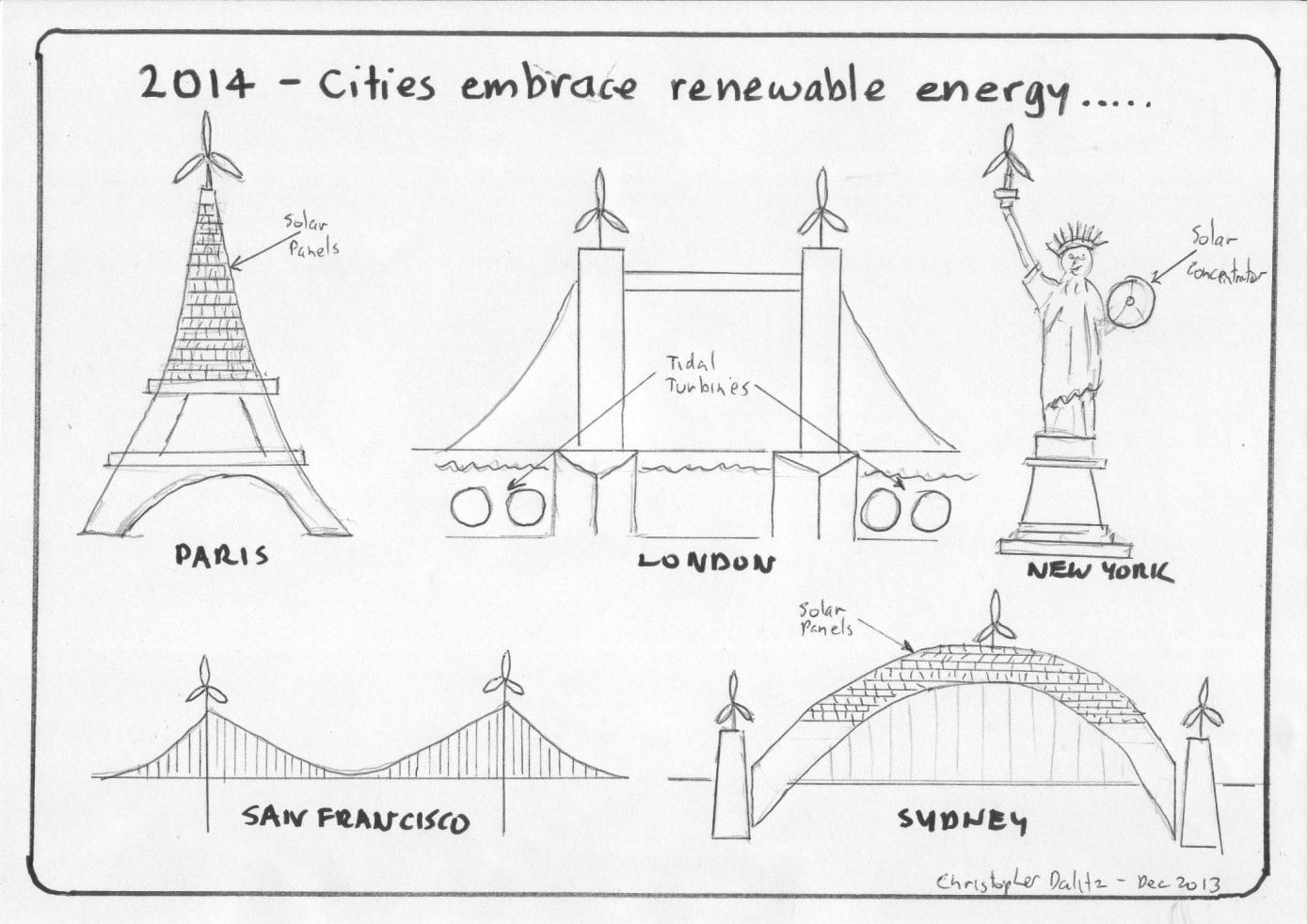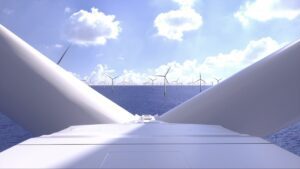Well, 2013 was an exciting year, politics aside. It was the year when rooftop solar, wind and solar began to compete with fossil fuels in the wholesale market, and incumbent utilities grew to realise – as grid parity for rooftop solar was delivered to millions of households – that the number was up for their decades-old business models.
So, what will 2014 hold? More of the same, but the stakes are rising. And how. As solar becomes more affordable, and storage chases it down the cost curve, regulation becomes even more critical – as a barrier to be removed to allow new and cheaper technologies to be deployed, or raised by the incumbents to protect the billions of dollars of sunk investment.
Regulations, regulations
In Australia, there will be crucial decisions. The biggest will be on the future of the Renewable Energy Target – the fate of the domestic wind energy industry, and in the short term the large scale solar industry, will depend on it. As will the domestic and commercial rooftop solar industry.
Other reviews will also be critical. The energy white paper, which the new conservative government insists on doing, even though the last was completed little more than a year ago, is designed to reinforce long term policy settings. Unless this is calibrated to take into account rapidly emerging technologies, this risks creating a dangerous outcome. And, of course, there is the future of the carbon price and what is in store in Direct Action.
Reviews by state-based pricing authorities on the setting of tariffs – and the potential to raise fixed charge and even penalize solar households, will also be important. And so, too, will be the future of the Clean Energy Finance Corporation under the new Senate, and the funding of ARENA under the new budget. Both institutions are important for emerging technologies, and to make Australian banks and financiers comfortable with new ideas and hardware.
We asked a bunch of people what they thought about the coming year, and we got on-the-record comments from four respected leaders that represent the key market sectors – distributed generation, large scale renewable energy developers, the utilities, and the consultant/lobbyist. Here’s what they had to say about the regulatory environment in the coming year. It was top of their list of priorities.
Distributed energy technology provider – Mark Twidell, CEO of SMA Australia
“For decades the next year has always felt critical, but 2014 really is! Till now public support has been assured but renewables (PV in particular) have grown from being helpful/amusing to seriously annoying for market incumbents requirement to meet their shareholders expectations . The often ideological battle to win public hearts and minds will intensify and ultimately be critical in key policy decisions in 2014. We need to stay focused on lowering the cost of renewables and increasing community ownership in and understanding of their energy supply options. Distributed ownership as much as generation will be the long term source of value. ”
Large scale renewable energy developer – Miles George, Infigen Energy
“Australia’s electricity market is transforming far more rapidly than most participants had expected. Strongly rising gas prices, falling renewable energy costs, and the public’s strong rejection of coal as a domestic generation fuel of the future are dictating our future generation mix. Concurrently the centralised generation/transmission model is under intense pressure from distributed renewable energy technologies. In 2014 private and State owners of legacy fossil fuel generation and network assets will attempt to force the hand of policy makers to underwrite the residual value of their stranded assets. This push against the tide will hinder the efficiency of a necessary transition to cleaner and more flexible generation technologies at the expense of electricity consumers.”
The utility – Michael Fraser, CEO of AGL Energy
“Ongoing policy uncertainty is clearly the biggest challenge facing AGL Energy. At the time of writing, there is uncertainty about the future of climate change policy with a lack of bipartisan support for a long-term policy framework that would facilitate investment decision making. At the same time, there is the statutory review of the Renewable Energy Target, unscientific planning and regulatory regimes related to coal-seam gas development, and the continued regulation of retail energy pricing in some states. Ultimately we believe that changes of governments will do little to improve the investment environment until there is genuine bipartisan support in critical policy areas such as climate change and energy policy.”
Consultant/lobbyist: Ray Wills, Duda & Wills
“The key issue for 2014 will be the continued uncertainty around the carbon price and the CEFC – or rather, based on the absence of a repeal as yet, a short period of certainty followed by an uncertainly long period of uncertainty. The essence of the problem is this: We know technology shifts are usually rapid and measured in the lifetime of a commodity - for smartphones 1-2 years, for household appliances 3-5 years, for motor cars 8-10 years, and for large electricity generation 25-30 years. We also know that the stone age doesn¹t end because they’d run out of stones. Once a change commences, the rest is history, and for energy markets the clean tech clock stated ticking in a big way a couple of years ago in 2011. Many forecasts in the traditional energy market don’t give credence to
renewables as disruptive, or indeed even further from reality, don’t even consider it as a credible energy source for a modern world. They are about to have a Kodak moment. So – the challenge for renewables in 2014 is in many cases we are stuck with those energy planners / regulators who do not accept the reality of change, and will naturally promulgate policy and investment decisions that
lock in old approaches to the market, and that will have the potential to create expensive legacy systems in energy generation that will last for many decades.”
The new killer technologies
As for big technology developments for 2014, these are not just hardware, but killer software (apps) and new financing mechanisms, which are just as crucial for deployment. There will be rapid improvements in battery storage technology that, with rising gas prices, will bring into question the future role of gas fired peaking generation, and add to pressure on the centralised generation/transmission model.
Smart systems that forecast the next few hours and days generation and plan energy consumption to minimise leakage to the grid will become more and more common. Grid integration electronics and storage that allow PV plants to offer real value to networks – power factor correction at night, frequency control, peak load support, will also emerge.
So, too, will web-based technology that allows consumers to be in control of their energy destiny – from simple social media tools to sharing their output of their rooftop power plant (see solar bank) to business models that allow distributed prosumers to join forces. Just imagine, suggests Twidell, if 200,000 5kW PV systems with 5kWHrs of storage could be networked and collectively bid 1 gigawatt hour into the NEM at critical price periods.
On the large scale, and mostly international, there will be the roll-out of the big new solar tower power plants, and those with molten salt storage, the development of “smart” wind turbines with storage, the rollout of utility-scale storage, and even floating turbines in Japan.
The big projects of 2014 in Australia
There will be a string of new developments: the emergence of “affordable” off-grid solar and battery arrays for suburban households (well, affordable for early adopters anyway), the development of new financing models that assists community energy projects, leasing models for solar, and solar and storage; and finance models that open that opportunity to state housing tenants, rentals, and apartment dwellers.
There will be a host of technology-specific projects – the opening of the first utility-scale solar PV arrays in the eastern states, both in the ACT and the development of a council project in Queensland; the opening of the world’s largest solar booster at Kogan Creek, and the opening of the world’s first multi-machine wave energy array, along with the first wave-powered desalination plants. The ACT will hold the first auction of wind energy capacity as part of its plan to source 90 per cent of its electricity from renewables by 2020.
Finally, on the issue of mega projects. RenewEconomy is aware of a string of exciting projects – the first mega-sized solar PV projects (think 500MW or more) in Australia, the arrival (finally) of stand-alone solar thermal with storage (in the mining industry, of all places), and even an extraordinary idea to export “solar fuels” to a major trading partner.
This is exciting stuff. So please come back to this website in 2014, when we can tell you more.









